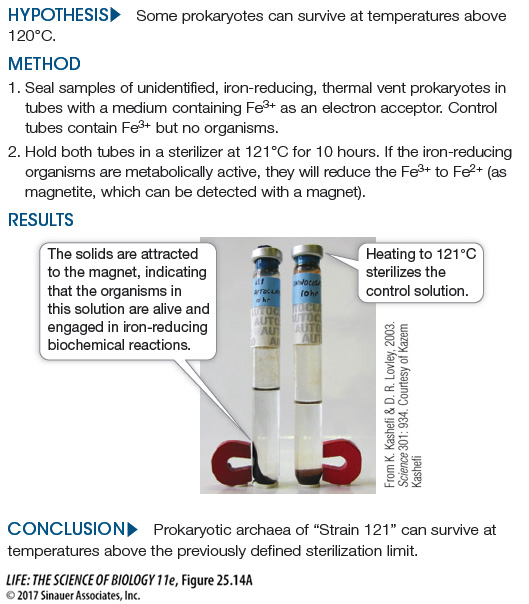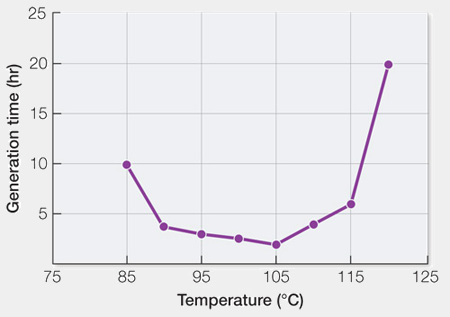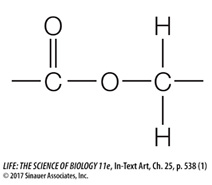Gene sequencing enabled biologists to differentiate Archaea from Bacteria
538
The original identification of Archaea as a group distinct from Bacteria was based on phylogenetic relationships determined from rRNA gene sequences. This separation was supported when biologists sequenced the first complete archaeal genome, which consisted of 1,738 genes—
Prokaryotic archaea are known for living in extreme habitats such as those with high salinity (salt content), low oxygen concentrations, high temperatures, or high or low pH (Figure 25.14). Many prokaryotic archaea are not extremophiles, however—
experiment

Figure 25.14A What Is the Highest Temperature Compatible with Life?
Original Paper: Kashefi, K. and D. R. Lovley. 2003. Extending the upper temperature limit for life. Science 301: 934.
Can any organism thrive at temperatures above 120°C? This is the temperature used for sterilization, known to destroy all previously described organisms. Kazem Kashefi and Derek Lovley isolated an unidentified prokaryote from water samples taken near a hydrothermal vent and found it survived and even multiplied at 121°C. The organism was dubbed “Strain 121,” and its gene sequencing results indicate that it is a prokaryotic archaeal species.
work with the data
Figure 25.14B What is the Highest Temperature Compatible with Life?
Original Paper: Kashefi, K. and D. R. Lovley. 2003.
After Kashefi and Lovley isolated Strain 121, they examined its growth at various temperatures. The table below shows generation time (time between cell divisions) at nine temperatures.
| Temperature °C | Generation time (hr) |
|---|---|
| 85 | 10 |
| 90 | 4 |
| 95 | 3 |
| 100 | 2.5 |
| 105 | 2 |
| 110 | 4 |
| 115 | 6 |
| 120 | 20 |
| 130 | No growth, but cells not killed |
QUESTIONS
Question 1
Make a graph from these data showing time as a function of temperature.

Question 2
Which temperature appears to be closest to the optimum for the growth of Strain 121?
105°C, where growth is fastest (generation time is lowest).
Question 3
Note that no growth occurred at 130°C, but that the cells were not killed. How would you demonstrate that these cells were still alive?
Simply lower the temperature of these cell cultures to below 120°C and look for cell growth.
A similar work with the data exercise may be assigned in LaunchPad.
There are five major groups of prokaryotic archaea (see Figure 25.1): Euryarchaeota, Crenarchaeota, Thaumarchaeota, Korarchaeota, and Lokiarchaeota. The Lokiarchaeota are of particular interest because recent studies of their genomes show that they are the closest known living relatives of eukaryotes.
Two characteristics shared by all prokaryotic archaea are the absence of peptidoglycan in their cell walls and the presence of lipids of distinctive composition in their cell membranes (see Table 25.1). The unusual lipids in the membranes of prokaryotic archaea are found in no bacteria or eukaryotes. Most lipids in bacterial and eukaryotic membranes contain unbranched long-

In contrast, some lipids in membranes of prokaryotic archaea contain long-

In addition, the long hydrocarbon chains in the lipids of prokaryotic archaea are branched. One class of archaeal lipids contains glycerol at both ends of the hydrocarbons (Figure 25.15). These lipids form a lipid monolayer structure that is unique to prokaryotic archaea. They still fit into a biological membrane because they are twice as long as the typical lipids in the bilayers of other membranes. Lipid monolayers and bilayers are both found among the prokaryotic archaea. The effects, if any, of these structural features on membrane performance are unknown.
